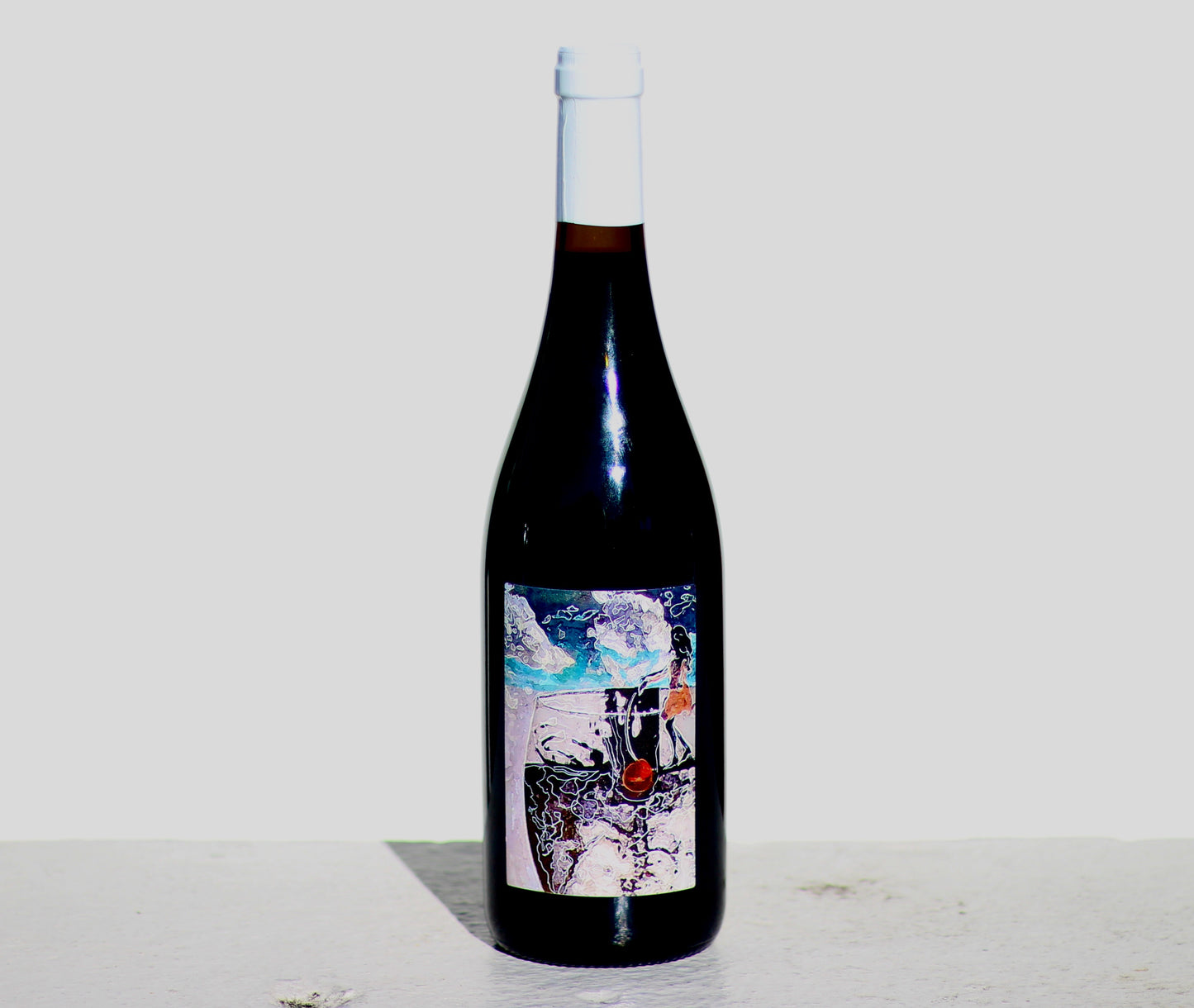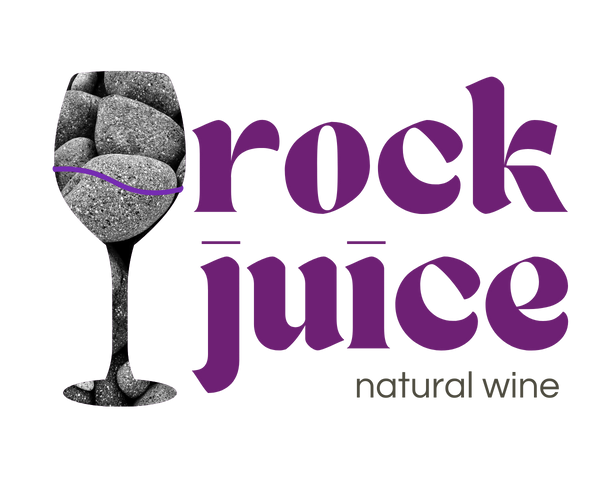1
/
of
1
2020 Domaine Baptiste Nayrand Coteau du Lyonnais Toit du Monde
2020 Domaine Baptiste Nayrand Coteau du Lyonnais Toit du Monde
Region: Coteau du Lyonnais < Northern Rhône < France
Grapes: Gamay
Vineyard/Cellar Stats: Certified organic + biodynamic farming; 100 year-old vines on stony blue diorite soils; after hand harvest, fruit goes into vat whole bunch for partial carbonic fermentation; aged in enamel-lined cement vat for 6-8 months, then bottled, unfined/unfiltered, with no added So2; zero-zero; 12%ABV
Winemaker: Baptiste Nayrand
Baptiste Nayrand got his start as a vigneron in this appellation by : he wanted to leave his soul-crushing career in marketing for a chemical company to do something that would combine his love of working outdoors with a passion for wine. Having lived in Lyon for some time, Nayrand had been drinking a ton of natural wine; in 2015, an internship with Julien Guillot at Clos des Vignes du Mayne confirmed his path of organic farming and natural winemaking for his own domaine. Later in the year, Nayrand started out with 3.5 hectares of vines and a garage below his home in the southern village of Millery to produce his own Coteaux du Lyonnais. Nayrand’s petite,
garagiste domaine has been certified organic since that beginning year, and now he's big into biodynamics.
Of his work, Baptiste gives us a tidy summary: "The vineyards are maintained without any chemical products, pesticides, or synthetic fertilizer. Parallel infusions of horsetail, nettle, comfrey, and willow are used to reinforce and structure the vines during their vegetative period, and to reduce to a strict minimum the use of copper
and sulfur. [In my use of] biodynamic methods, I have the constant objective to recreate the harmony between elements: mineral, vegetable, human, and cosmos. Vinifications are done exclusively with native yeast, without sulfur dioxide, and without any modern oenological products. All vinification takes place without the use of temperature control (neither heating or cooling), as the objective is to infuse the grapes rather than to extract them. As a result, there are very few punchdowns or pumpovers executed, for the sake of respecting the integrity of the grapes as long as possible, as well as to obtain maximum finesse and complexity. Conscious of the health of our customers, we reduce the quantity of sulfites in the wine to the strict minimum to guarantee a better digestibility and an ivresse joyeuse (literally a joyful inebriation, but it sounds better in French).
If you zoom in on the city of Lyon, to the north you’ll see Beaujolais—closest by, its southern stretches called the ‘Pierre Dorées’—and to the south, the northern Rhône. But there’s connective tissue between the two famous regions, an area that, especially pre-phylloxera, once flourished with vineyards: the Coteaux du Lyonnais. Having only gained appellation status in 1984, the region has been obscured for some century or more, even though it was heavily planted to Gamay after phylloxera, then separated from Beaujolais by edict in 1938. What this means is that nearly 90 years ago, people in the Lyonnais were seeing and understanding that this region has
something distinctive to offer, wines that build a bridge between the structure of the southern Cru Beaujolais and the wild intensity of the northern Rhône. His wines also have a similar excitement and energy found in the most legendary natural wine producers in Beaujolais and the northern Rhône.
'Toit du Monde' comes from old vines planted in 1929 up in the hills above the city of Lyon, planted on a vein of blue diorite similar to that found on the Côte de Brouilly. It has a serious and structured backbone, like the best Brouilly wines, but also has a decidedly juicy, playful side. Dripping with inky, purple fruit, it reads, on first sip, like delicious natty Welch's grape juice for adults, but with air and time the nuances emerge - some wet stone, some earthy soil, a kiss of spice. A happy, joyful wine that any Gamay lover should experience.
SERVE SLIGHTLY CHILLED
Grapes: Gamay
Vineyard/Cellar Stats: Certified organic + biodynamic farming; 100 year-old vines on stony blue diorite soils; after hand harvest, fruit goes into vat whole bunch for partial carbonic fermentation; aged in enamel-lined cement vat for 6-8 months, then bottled, unfined/unfiltered, with no added So2; zero-zero; 12%ABV
Winemaker: Baptiste Nayrand
Baptiste Nayrand got his start as a vigneron in this appellation by : he wanted to leave his soul-crushing career in marketing for a chemical company to do something that would combine his love of working outdoors with a passion for wine. Having lived in Lyon for some time, Nayrand had been drinking a ton of natural wine; in 2015, an internship with Julien Guillot at Clos des Vignes du Mayne confirmed his path of organic farming and natural winemaking for his own domaine. Later in the year, Nayrand started out with 3.5 hectares of vines and a garage below his home in the southern village of Millery to produce his own Coteaux du Lyonnais. Nayrand’s petite,
garagiste domaine has been certified organic since that beginning year, and now he's big into biodynamics.
Of his work, Baptiste gives us a tidy summary: "The vineyards are maintained without any chemical products, pesticides, or synthetic fertilizer. Parallel infusions of horsetail, nettle, comfrey, and willow are used to reinforce and structure the vines during their vegetative period, and to reduce to a strict minimum the use of copper
and sulfur. [In my use of] biodynamic methods, I have the constant objective to recreate the harmony between elements: mineral, vegetable, human, and cosmos. Vinifications are done exclusively with native yeast, without sulfur dioxide, and without any modern oenological products. All vinification takes place without the use of temperature control (neither heating or cooling), as the objective is to infuse the grapes rather than to extract them. As a result, there are very few punchdowns or pumpovers executed, for the sake of respecting the integrity of the grapes as long as possible, as well as to obtain maximum finesse and complexity. Conscious of the health of our customers, we reduce the quantity of sulfites in the wine to the strict minimum to guarantee a better digestibility and an ivresse joyeuse (literally a joyful inebriation, but it sounds better in French).
If you zoom in on the city of Lyon, to the north you’ll see Beaujolais—closest by, its southern stretches called the ‘Pierre Dorées’—and to the south, the northern Rhône. But there’s connective tissue between the two famous regions, an area that, especially pre-phylloxera, once flourished with vineyards: the Coteaux du Lyonnais. Having only gained appellation status in 1984, the region has been obscured for some century or more, even though it was heavily planted to Gamay after phylloxera, then separated from Beaujolais by edict in 1938. What this means is that nearly 90 years ago, people in the Lyonnais were seeing and understanding that this region has
something distinctive to offer, wines that build a bridge between the structure of the southern Cru Beaujolais and the wild intensity of the northern Rhône. His wines also have a similar excitement and energy found in the most legendary natural wine producers in Beaujolais and the northern Rhône.
'Toit du Monde' comes from old vines planted in 1929 up in the hills above the city of Lyon, planted on a vein of blue diorite similar to that found on the Côte de Brouilly. It has a serious and structured backbone, like the best Brouilly wines, but also has a decidedly juicy, playful side. Dripping with inky, purple fruit, it reads, on first sip, like delicious natty Welch's grape juice for adults, but with air and time the nuances emerge - some wet stone, some earthy soil, a kiss of spice. A happy, joyful wine that any Gamay lover should experience.
SERVE SLIGHTLY CHILLED
Regular price
$33.00
Regular price
Sale price
$33.00
Unit price
/
per
Shipping calculated at checkout.
Couldn't load pickup availability


